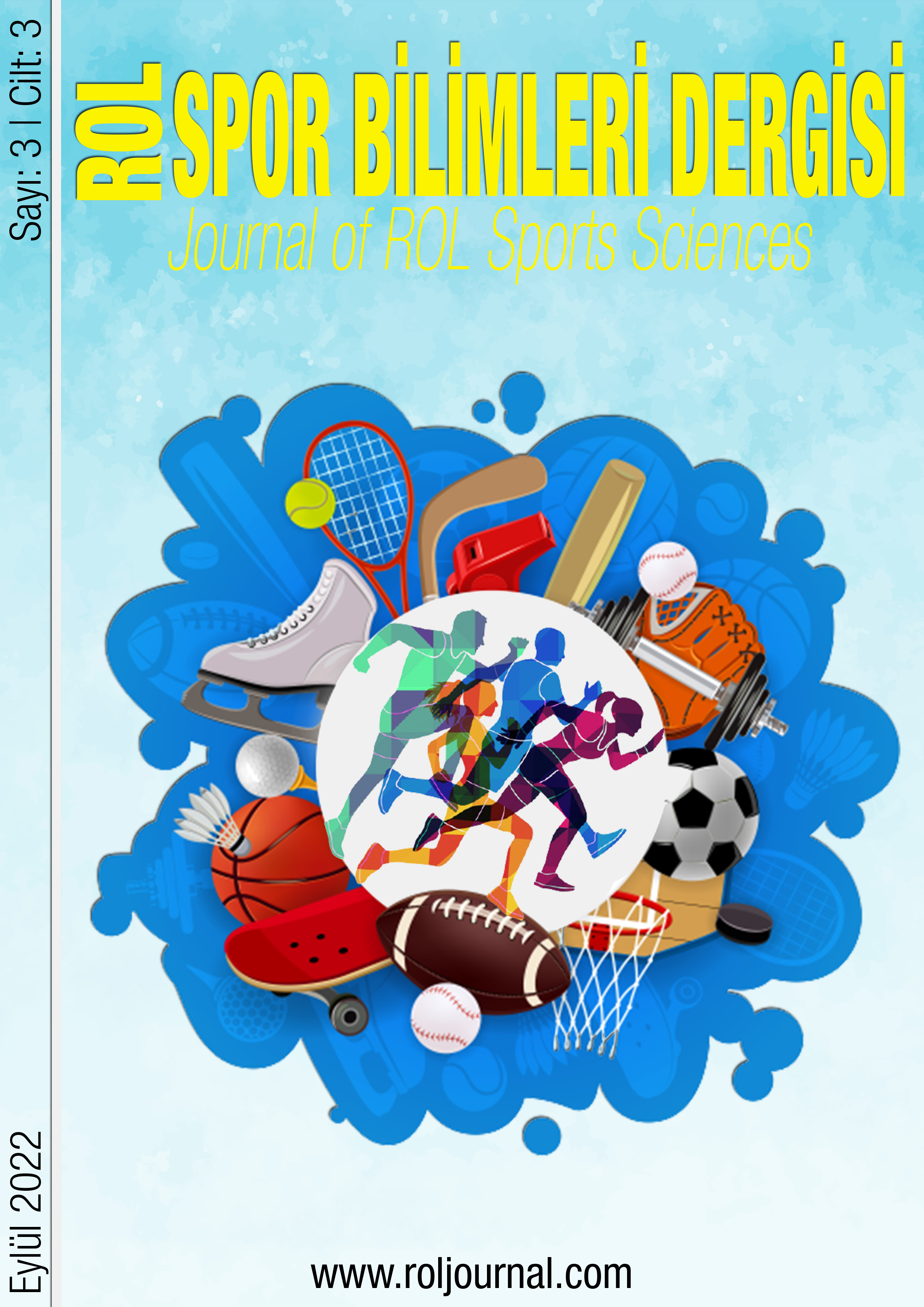Examination of personal care products use levels of women basketball players
DOI:
https://doi.org/10.5281/zenodo.7110604Keywords:
Personal Care Products, Cosmetics, Elite Female Basketball PlayerAbstract
The purpose of this research is to determine the personal care products usage levels of the elite female basketball players according to the various variables. In order to collect data in this study, “Personal Information Form” and “Personal Care Products Usage Scale” was applied to 91 elite female basketball players who are currently active in the professional leagues of the Turkish Basketball Federation. The personal information form includes 10 close-ended demographic questions to obtain personal information and collect data on independent variables. The personal care products usage scale is an 11 item scale to determine the personal care products used by the athletes and their usage. SPSS 25 statistical analysis program was used in the analysis of the data. These data are expressed as frequency and percentage. In addition, the Chi-Square Test (x2) was conducted to determine whether the variables of income level, education status and duration of doing sports have a significant effect on the answers given to the attitude questions. There was no significant difference in the variables of Personal care products and frequency of use of athletes, education level and duration of doing sports. In the comparison by Monthly Income Level, it was determined that there was a significant difference in terms of soap, wet wipes, deodorant and make-up remover usage levels. In general, it has been determined that the level of personal care product usage is higher in athletes with high income levels.
Objective: The purpose of this research is to determine the personal care products usage levels of the elite female basketball players according to the various variables. Material and Methods: In order to collect data in this study, “Personal Information Form” and “Personal Care Products Usage Scale” was applied to 91 elite female basketball players who are currently active in the professional leagues of the Turkish Basketball Federation. The personal information form includes 10 close-ended demographic questions to obtain personal information and collect data on independent variables. The personal care products usage scale is an 11 item scale to determine the personal care products used by the athletes and their usage. SPSS 25 statistical analysis program was used in the analysis of the data. These data are expressed as frequency and percentage. In addition, the Chi-Square Test (x2) was conducted to determine whether the variables of income level, education status and duration of doing sports have a significant effect on the answers given to the attitude questions. Results: There was no significant difference in the variables of Personal care products and frequency of use of athletes, education level and duration of doing sports. In the comparison by Monthly Income Level, it was determined that there was a significant difference in terms of soap, wet wipes, deodorant and make-up remover usage levels. Conclusion: In general, it has been determined that the level of personal care product usage is higher in athletes with high income levels.
References
Akyüz M. ve Eroğlu Ö. (2015). Toplumsal sınıfın, ortalama gelir düzeyinin ve cinsiyet farklılığının sembolik tüketim eğilimi üzerindeki etkisi; genç tüketiciler üzerine bir araştırma, Akdeniz İ.İ.B.F. Dergisi (32), 98-128.
Arman C, (2013). Gelir dağılımının tüketici davranışlarına etkisi, Adnan Menderes Üniversitesi Sosyal Bilimler Enstitüsü İktisat Anabilim Dalı, Yüksek Lisans Tezi, Aydın.
Blanco-Dávila, F. (2000). Beauty and the body: the origins of cosmetics. Plastic and reconstructive surgery, 105(3), 1196-1204.
Brenner, I. K., Shek, P. N. & Shephard, R. J. (1994). Infection in athletes. Sports Medicine, 17(2), 86-107.
Clijsen, R., Barel, A.O. & Clarys, P. (2014). Use of cosmetics in sports. E. T.: 06.12.2020, https://www.researchgate.net/profile/Ron_Clijsen/publication/263397952_The_Use_of_Cosmetics_in_Sport/links/54c7a8580cf238bb7d0af5be/The-Use-of-Cosmetics-in Sport.pdf.
Çomoğlu, T. (2012). Kozmetikler. Marmara Pharmaceutical Journal, 16(1), 1 8.
Derya, A., Ilgen, E. & Metin, E. (2005). Characteristics of sports‐related dermatoses for different types of sports: a cross‐sectional study. The Journal of Dermatology, 32(8), 620-625.
Gleeson M. and Walsh N.P. (2012). The BASES expert statement on exer-cise, immunity, and infection. J. Sports Sci; 30(3):321–324.http://dx.doi.org/10.1080/02640414.2011.627371.
Gomez-Lopez, A., Alastruey-Izquierdo, A., Rodriguez, D., Almirante, B., Pahissa, A., Rodriguez-Tudela, J.L. & Cuenca-Estrella, M. (2008). Prevalence and susceptibility profile of Candida metapsilosis and Candidaorthopsilosis: results from population-based surveillance of candidemia in Spain. Antimicrobial agents and chemotherapy, 52(4), 1506-1509. DOI:10.1128/AAC.01595-07.
Keskin, İ.C. (2017). Elitaltı basketbolcularda turnuva döneminde müsabaka öncesi ve sonrası hematolojik değerlerin değişiminin incelenmesi, Dumlupınar Üniversitesi Sağlık Bilimleri Enstitüsü, Beden Eğitimi ve Spor Anabilim Dalı Yüksek Lisans Tezi, Kütahya.
Konar, N. ve İmamoğlu A.F. (1994). Hygienic conditions in wresting, exercising and matching fields (a study on wrestling rings and wrestling education centers), Gazi University Institution of Health Sciences, Thesis of Master of Science. Ankara.
Mountjoy, M., Sundgot-Borgen, J., Burke, L., Carter, S., Constantini, N., Lebrun, C., ... & Ljungqvist, A. (2015). Authors’ 2015 additions to the IOC consensus statement: Relative Energy Deficiency in Sport (RED-S). British Journal of Sports Medicine, 49(7), 417-420.
Raysmith, B.P. and Drew, M.K. (2016). Performance success or failure is influenced by weeks lost to injury and illness in elite Australian track and field athletes: a 5-year prospective study. Journal of Science and Medicine in Sport, 19(10), 778-783.
Ünalmış, M. (2020). Kozmetikte yeni trend: spor kozmetikleri. Avrasya Spor Bilimleri ve Eğitim Dergisi, 2(2), 135- 146
Yılmaz, E. and Ozkan, S. (2009). The comparison of personal hygiene habits of students studying primary schools at different regions of the same city. Journal of Fırat Health Services, 4(10): 19-34.
Downloads
Published
How to Cite
Issue
Section
License
Copyright (c) 2022 ROL Spor Bilimleri Dergisi

This work is licensed under a Creative Commons Attribution 4.0 International License.



